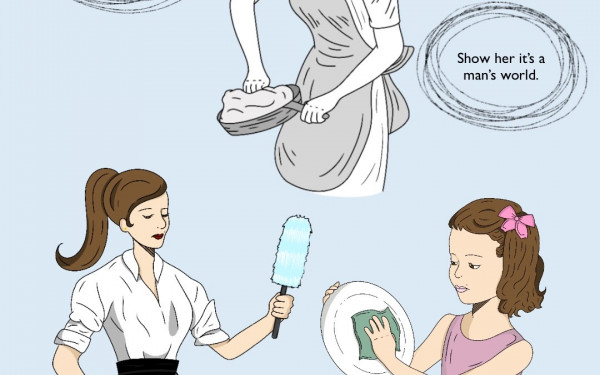Beyond Reactive Approaches to Violence Against Women
This year, the UN Secretary General launched a campaign called ‘Orange the World: Raise Money to End Violence against Women and Girls,’ meant to bring financial support to the often-underfunded initiatives to end gender-based violence operating around the world.
Why do we need a campaign dedicated to this cause and these initiatives? Well, for starters, one in three women worldwide will experience physical or sexual violence in their lifetime. To put that in perspective, that’s the same number of people in the world who actively use social media.
To successfully eliminate gender-based violence, we need to examine what’s currently being done to tackle it. There are many essential services—from rape crisis hotlines to women’s shelters to rape survivor advocacy volunteers, and even dance classes for survivors of domestic violence—that were started as a response to violence against women.
These services provide assistance to the millions of women worldwide who are survivors of sexual assault or domestic violence. They deserve all the funding the UN’s Secretary General’s campaign can send their way. However, they can do little to actually eliminate the issue altogether, since their focus is on providing support to women who have already been victimized rather than on prevention.
Many prevention-based initiatives exist, with more proactive responses to violence. Services such as self-defence classes for women or college flyers on how to avoid rape on campus—or even products like nail polish that changes color when dipped in a drink spiked with date rape drugs—are handy and in certain situations empowering for many women. But with regards to actually tackling the issue of gender-based violence, these services miss the mark.
The vast majority of violence against women is perpetrated by men. Any efforts to protect women, although helpful, will never end this violence. This is because it simply does not address the root of the issue. When we teach a girl that she is responsible for preventing rape, we are essentially telling her to “make sure he rapes the other girl instead.” What we need to do is not just arm our girls, but do a better job of educating our boys.
Our culture enables violence against women. It teaches men that women exist to be under their control and in their possession, and it positions women as a source of satisfaction by any means—even if that means engaging in sexual assault or physical violence. We may not necessarily tell our boys this outright, but starting very early, they internalize the opposite expectations society has for women and men —as well as its hurtful, preconceived notions of gender and relationships.
It takes years to unlearn what we’re taught when we’re young. If we stop exposing boys to the idea that the only things men gain from women are power and pleasure, if we start considering women in the media and in real life as full human beings with the same rights and limitations as men, we’ll see a change in how men view women—not as possessions, but as equals.
To eliminate gender-based violence, we need to see a shift in how boys are taught about relationships with women. We need to provide education that teaches boys that women deserve full ownership of their bodies and their lives, in the same way that any man does.
One example is Ontario’s new sex-education curriculum, which introduces students to the concept of a “yes means yes” model of consent, as opposed to the years-old mantra of “no means no.” Students learn that without the presence of an enthusiastic “yes,” they do not have their partner’s consent. Silence or uncertainty are therefore just as damning as a “no.”
This is exactly the type of initiative that addresses the root causes of violence against women, because it stresses the fact that the feelings and opinions of everyone involved in a sexual act have equal importance. A man will be less likely to view a woman as something to “score” if he fully understands that she has just as much control over the situation as he does, and just as much to gain from the experience.
Of course, many anti-rape activists argue that rape is more about power than it is about sex, but if men are not taught that it is masculine or desirable to have power over women, then rape would surely lose its appeal for many.
Another education strategy that has the potential to reduce violence against women is the implementation of mandatory classes on the prevention of violence in relationships, like they’ve done in the U.K.
If we want to truly eliminate violence against women, initiatives like these need to become the worldwide norm. Services in response to rape and domestic violence that are mainly reactive or focused on helping women protect themselves have done a lot of good. But without addressing our cultural values that encourage men to seek control and power of women, they will forever remain secondary, because the cause of gender-based violence will still exist.






_600_375_90_s_c1.jpg)